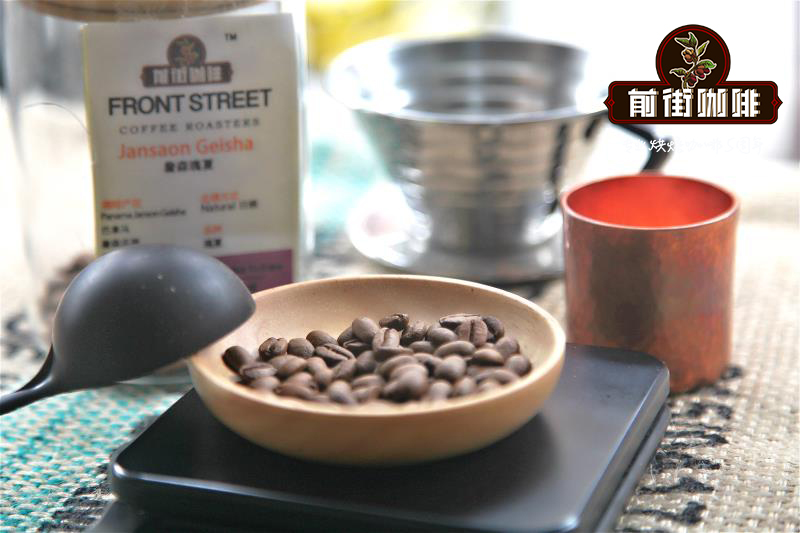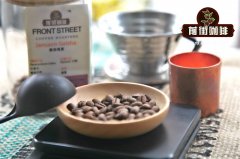Santa Barbara Region-Honduras Coffee Bean Features Honduran Coffee Estate

Professional coffee knowledge exchange more coffee bean information please follow the coffee workshop (Wechat official account cafe_style)
Honduras, a country in Central America, is one of the countries with which Taiwan has diplomatic relations. Even the presidential residence uses mainly Honduras coffee, and often uses Honduras coffee when giving gifts. What is most surprising is that since 2011, Honduras has begun to produce more coffee than Guatemala, making it the country with the largest coffee production in Central America and ranking among the top 10 coffee producers in the world.
In fact, most of the Honduras coffee is sold to Europe, and it is very popular among Europeans. Germany is the main importer of Honduras coffee, importing nearly 40 million kilograms of Honduras coffee every year. Although some of the coffee from Honduras is sold to the United States and Japan, the sales are not as good as in Europe.
Flavor of coffee producing area in Honduras
Honduras has six major coffee producing areas, mainly located in the western and southern Copan, Opalaca, Montecillos, Comayagua, Agalta Tropical and El Paraiso. Three of them are major coffee producing areas:
Montecius (Montecillos): the highest manor in Honduras, the coffee is bright and layered, full of rich fruit and sweet aromas with citrus aromas.
Copan: the coffee beans of Koban are all chocolate flavor, mellow taste and high sweetness.
Agalta Tropical: the coffee beans in this area have a balance of honey sweetness and acidity, with chocolate tonality.
Generally speaking, Hongguo coffee alcohol thickness and sweetness are quite high, all fruit tone, but sometimes with nutty, taffy flavor, is quite multi-layered coffee.
The St. Vincent processing plant, located in the small town of Pena Blanca in the Santa Barbara district of Santa Barbara, north of Lake Yojoa, west of Honduras, buys coffee cherries produced by small coffee farmers in the surrounding towns of El Cielito, Las Flores and El Cedral, each with at least 35 families and one school.
Although the quantity is so small that it is usually difficult to separate these small farmers' production batches, the coffee produced in these regions has always been amazing with high sweetness and fruity.
Most of the local coffee farmers have worked with family members on coffee production since they were young, passing on coffee planting skills from generation to generation. Local resources are poor, and residents work hard all day just to make life better. Over the past five years, coffee batches produced in this area have often been the winners of COE competitions in Honduras, giving producers in the area a considerable opportunity to further gain access to resources to improve their quality of life through high-quality coffee production.
This carefully produced washed coffee is manually selected in the channel before it is sent to the concrete or wooden tank to wash and ferment for 18 to 24 hours, and then wash the mucous membrane in the tank with clean water.
Dry on a platform set up by the farmhouse or sent to the warm courtyard of the St. Vincent treatment plant to dry as appropriate.
St. Vincent is a family-run processing plant founded by Fidel Paz Sabillon more than 20 years ago. It was only in 2002 that it started its business involving the export of coffee. At the same time, as an agronomist, exporter and indicator cup tester, Angel Arturo Paz helps farmers upgrade their planting technology and improve production equipment through projects, devotes himself to close ties with producers, and takes coffee cup testing as a strict check for each batch of products.
Flavor: sweet flower, orange peel, red berry, tropical fruit, melon, sweet mint herbal caramel milk
Important Notice :
前街咖啡 FrontStreet Coffee has moved to new addredd:
FrontStreet Coffee Address: 315,Donghua East Road,GuangZhou
Tel:020 38364473
- Prev

Niagara-Falls Manor Coffee Nicaragua Coffee beans characteristics Niagara Coffee Bean Flavor
Professional coffee knowledge exchange more coffee bean information please follow the coffee workshop (Wechat official account cafe_style) Niagara Falls Manor New Segovia (Nueva Segovia) is one of the three boutique coffee producing areas in northern Nicaragua near Honduras. In recent years, the Coffee Manor in New Segovia has performed very well in the COE competition, and Waterfall Manor is located here.
- Next

Honduras-Olanqiu Coffee producing area Honduran Coffee Variety Honduran Coffee Manor
Professional coffee knowledge exchange more coffee bean information Please pay attention to Coffee Workshop (Wechat official account cafe_style) there are 280000 hectares of coffee plantations in Honduras, mainly small coffee merchants, most of which are smaller than 3.5 hectares, accounting for 60% of Hongguo's production. In the coffee garden, men and women collect coffee beans with their hands, then handle them carefully and treat them
Related
- Does Rose Summer choose Blue, Green or Red? Detailed explanation of Rose Summer Coffee plots and Classification in Panamanian Jade Manor
- What is the difference between the origin, producing area, processing plant, cooperative and manor of coffee beans?
- How fine does the espresso powder fit? how to grind the espresso?
- Sca coffee roasting degree color card coffee roasting degree 8 roasting color values what do you mean?
- The practice of lattes: how to make lattes at home
- Introduction to Indonesian Fine Coffee beans-- Java Coffee producing area of Indonesian Arabica Coffee
- How much will the flavor of light and medium roasted rose summer be expressed? What baking level is rose summer suitable for?
- Introduction to the characteristics of washing, sun-drying or wet-planing coffee commonly used in Mantenin, Indonesia
- Price characteristics of Arabica Coffee Bean Starbucks introduction to Manning Coffee Bean Taste producing area Variety Manor
- What is the authentic Yega flavor? What are the flavor characteristics of the really excellent Yejasuffi coffee beans?

